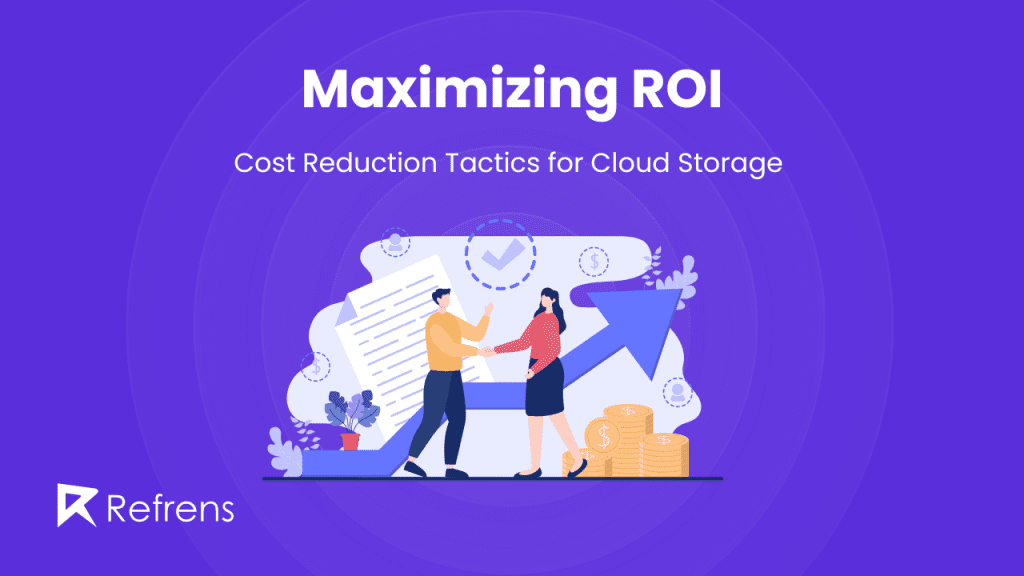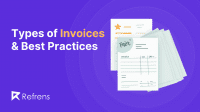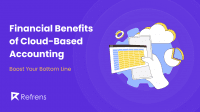As an IT professional, cloud storage administrator, or decision-maker in a startup or established enterprise, you’re likely looking to maximize your return on investment (ROI) in cloud storage. Optimizing costs while maintaining efficiency is a key challenge in today’s digital landscape.
This article explores practical strategies for reducing expenses without compromising performance. Understanding and implementing these techniques can lead to substantial savings and enhanced resource utilization, whether you’re a startup or an established enterprise. From assessing current storage usage to negotiating favorable contracts, let’s explore achieving cost efficiency in your cloud storage endeavors.
Assessing Current Storage Usage and Costs
Before embarking on any cost-saving measures, getting a clear picture of your current storage landscape is crucial. Start by conducting a thorough audit of your storage needs. Inventory all your data and analyze its relevance and usage patterns. By understanding what you have and how it’s being used, you can identify areas for optimization and potential cost savings.
Next, look for any unused or underutilized resources. According to industry studies, up to 30% of cloud resources are often unused or idle, representing a significant opportunity for cost savings. Identifying and reclaiming these resources can eliminate unnecessary expenses and improve cost efficiency.
Look closely at your current pricing plans and contracts with cloud service providers. Many businesses must pay attention to the fine print, missing out on potential savings opportunities. Evaluate whether you’re on the most cost-effective plan for your needs and consider renegotiating contracts or switching providers if necessary. With the rapid evolution of cloud pricing models, staying informed and proactive is key to maximizing cost efficiency.
Use cloud management tools to regularly monitor and analyze your storage usage and costs. These tools provide valuable insights into your spending patterns and can help identify areas for optimization. Set up alerts for unusual spikes in usage or costs, allowing you to address issues promptly and prevent overspending.
By regularly assessing your current storage usage and costs, you can identify opportunities for optimization and maximize cost efficiency in your cloud storage operations. Stay proactive and vigilant, leveraging tools and insights to improve your cost-saving efforts continuously.
Optimization Techniques for Cost Reduction
Implementing optimization techniques is essential when it comes to maximizing cost efficiency in cloud storage. Effective cloud cost optimization strategies help identify unused resources and streamline usage to reduce unnecessary expenses. Here are some strategies to help you reduce costs without sacrificing performance:
Implementing Data Compression and Deduplication Techniques
Implementing data compression and deduplication techniques can significantly reduce storage costs. These methods help minimize the storage space needed by eliminating redundant data and compressing files. By reducing the volume of data stored, you can lower your storage expenses while maintaining data integrity and accessibility.
Utilizing Tiered Storage Solutions for Efficient Data Management
Tiered storage solutions allow you to categorize your data based on its importance and access frequency. By storing less critical or infrequently accessed data on lower-cost storage tiers, such as cold storage or archival storage, you can save money without compromising accessibility. This approach ensures that you only pay for the storage resources you need for each data type.
Leveraging Cloud Storage Lifecycle Policies
Cloud storage providers offer lifecycle policies that automatically manage data based on predefined rules. These policies can automatically transition data between storage tiers or delete obsolete data after a certain period. Automating these processes allows you to streamline data management and optimize storage costs without manual intervention.
Embracing Serverless Architectures for Cost Efficiency
Serverless architectures, such as serverless computing and serverless databases, offer a pay-as-you-go model where you only pay for the resources you use. You can reduce overhead costs and scale more efficiently by eliminating the need to provision and manage servers. Serverless architectures also offer built-in scalability and fault tolerance, ensuring high availability without the added cost of maintaining infrastructure.
Automation and Management Tools
Automating your storage management processes can significantly enhance cost efficiency and streamline operations. Here are some essential automation and management tools to consider:
Exploring Automation Solutions for Storage Management
Automation solutions like scripts and workflows can streamline repetitive tasks and optimize storage usage. For example, you can automate data backups, migration, and resource provisioning, reducing manual effort and minimizing the risk of errors. By automating routine tasks, you can free up valuable time and resources for more strategic initiatives.
Implementing Monitoring and Alerting Systems for Cost Control
Monitoring and alerting systems allow you to track your storage usage and costs in real-time. These tools provide insights into resource utilization, performance metrics, and spending patterns, enabling you to identify inefficiencies and cost-saving opportunities. Set up alerts for abnormal usage patterns or unexpected cost increases, allowing you to take immediate action and prevent overspending.
Leveraging Cloud Cost Management Platforms
Cloud cost management platforms offer comprehensive insights and analytics into your cloud spending. These platforms aggregate data from multiple cloud providers and services, providing a holistic view of your cloud costs. With features like cost allocation, budgeting, and forecasting, you can proactively manage and optimize your cloud spending to maximize cost efficiency.
Vendor Negotiation and Contract Management
Effective vendor negotiation and contract management are essential for optimizing costs and maximizing value in your cloud storage operations. Here’s how you can navigate this process:
Strategies for Negotiating Favorable Terms with Cloud Service Providers
When negotiating with cloud service providers, understand your needs and requirements. Emphasize the importance of cost efficiency and scalability, and be prepared to negotiate pricing based on your usage patterns and volume commitments. Leverage your usage data and market benchmarks to negotiate competitive rates and favorable terms.
Understanding and Optimizing Pricing Models
Cloud service providers offer a variety of pricing models, including pay-as-you-go, subscription-based, and reserved instances. Evaluate each pricing model based on usage patterns, budget constraints, and long-term goals. Reserved instances offer cost savings for predictable workloads, while pay-as-you-go models provide flexibility for fluctuating demand. Optimize your pricing model selection to minimize costs while meeting your performance and scalability requirements.
Contractual Considerations for Cost Reduction
When reviewing contracts with cloud service providers, consider key clauses related to pricing, service levels, and termination terms. Negotiate contract terms that align with your cost-saving objectives and provide flexibility for scaling up or down as needed. Consider including provisions for performance guarantees, service credits, and penalty clauses to hold vendors accountable for meeting their commitments. Work closely with your legal team or contract manager to ensure contracts are clear, fair, and enforceable.
As a product manager, your vendor negotiation and contract management role is critical for driving cost efficiency and maximizing value for your organization. Stay informed about industry trends and benchmark pricing, and negotiate strategically to achieve the best possible outcomes for your cloud storage investments.
Conclusion
Congratulations on completing this journey to maximize ROI through cost-reduction tactics for cloud storage. By implementing the strategies outlined in this article, you’re well-equipped to drive significant savings and efficiency in your storage operations.
Regularly assessing storage usage, optimizing infrastructure, and leveraging automation tools are key to sustaining cost efficiency over time. Negotiating favorable terms with vendors and carefully managing contracts will further contribute to your success in controlling costs.
As you navigate the dynamic landscape of cloud storage, stay informed about emerging technologies and best practices. Stay proactive in monitoring costs and adapting your strategies to evolving business needs.
By prioritizing cost efficiency and adopting a strategic approach to cloud storage management, you can unlock substantial savings and drive greater value for your organization. Keep optimizing, innovating, and maximizing your ROI in the cloud.



















